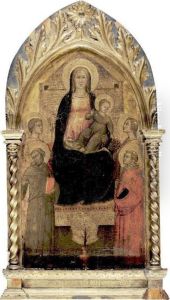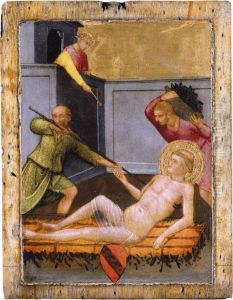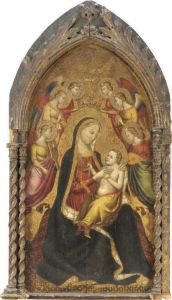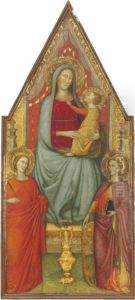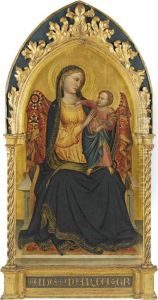Lorenzo Di Niccolo Di Martino Paintings
Lorenzo di Niccolò di Martino was an Italian painter active during the Gothic period, primarily in Florence. His exact birth date is not known, but his activity as a painter is documented from the late 14th century until his death in 1412. Lorenzo was a part of the prolific art scene in Florence during a time when the city was a hub of cultural and artistic innovation. However, he is often overshadowed by the more famous artists of the subsequent Renaissance period.
Lorenzo's work is characterized by the Gothic style, which was typical of European art during the late Middle Ages. This style incorporated elongated figures, vibrant colors, and an emphasis on decorative patterns and gold leaf. He was influenced by his contemporaries and predecessors, such as Giotto and Taddeo Gaddi, who were also working in Florence and contributing to the development of Italian art.
Despite not being as well-known as other artists from his era, Lorenzo di Niccolò contributed to the art of his time through altarpieces, frescoes, and panel paintings. His works can be found in various churches in Florence and its surrounding areas. These pieces often feature religious subjects, as was common for the period, and were designed to inspire devotion and convey religious narratives to viewers.
One of Lorenzo's notable works is the 'Coronation of the Virgin', an altarpiece that demonstrates his skill in composing complex scenes with multiple figures. The intricate details and use of gold in this work are typical of the opulence and spiritual luminosity desired in ecclesiastical art of the time. While little is known about Lorenzo's life and training, his surviving works suggest he was a competent artist who maintained the traditions of Florentine painting before the advent of the Renaissance.
After his death in 1412, Lorenzo di Niccolò's style quickly became outdated as the new Renaissance approach to art, emphasizing realism, perspective, and humanism, began to take hold in Italy. Nevertheless, his contributions are still recognized by art historians who study the progression of Western art and the context in which these stylistic transitions occurred.
